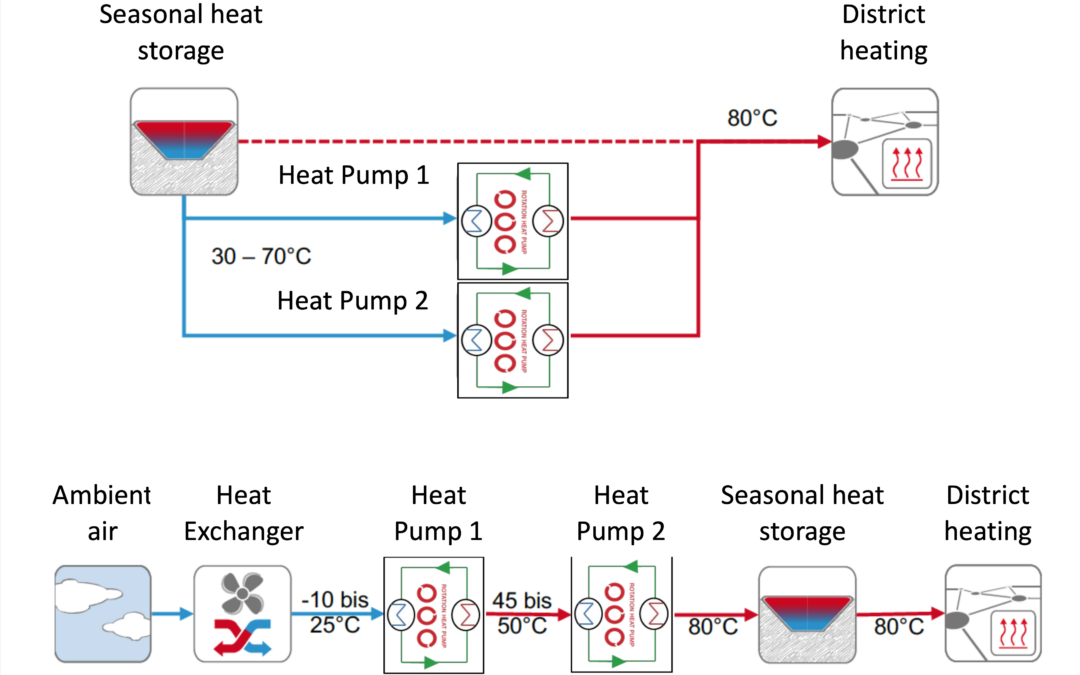Rotation Heat Pumps are used both for discharging (in parallel) and for filling (in series) the geothermal storage tank
Germany’s first underground storage facility is being built in Meldorf in Schleswig-Holstein. ecop’s Rotation Heat Pumps are part of the highly innovative solution. The project is managed by the Steinbeis Innovation Center enegieplus (SIZ) and integrates the use of industrial waste heat and air to fill the storage tank. In the discharge cycle, extracted heat is brought to a high level for district heating. This allows the Rotation Heat Pump to fully exploit its advantages.
The gigantic basin of the heat storage tank holds 50 million liters of water and is heated sustainably using industrial waste heat and ambient air as a heat source. It supplies the energy for heating and hot water for numerous public buildings and later also for 400 households. Seasonal heat storage is a key component that enables the system to efficiently capture and store excess heat at times of low demand and release it again when demand is high. In warmer months or at times of low heating demand, the surplus heat provided by the heat pump can be stored in the heat storage system for later use.
The Rotation Heat Pump developed by ecop is a central component of the system. It works in two directions: for filling and discharging the heat storage tank, the temperature of which varies greatly (from 30°C to 80°C).
If possible, the waste heat is used directly for the storage tank. If the heat sources (e.g. ambient air and low-temperature heat from industrial operations) are not hot enough for this, the heat pump is used. When charging, it uses these heat sources to increase the temperature in the heat storage tank to 80°C. For an efficient application, two Rotation Heat Pumps are used in series. In this case, the heat from the storage tank can be used directly for the heating network.
If the temperature of the heat storage tank is too low for this (e.g. 30-70°C), the ecop heat pumps raise the temperature for the heating network to the required 80°C. To do this, the heat pumps work in parallel, i.e. provide the temperature lift at the same time.
Both activities are performed by the same heat pumps, so that the high flexibility of the Rotation Heat Pumps is fully utilized. Adaptation to the different tasks and temperature levels is carried out continuously and very quickly by the electronic control system via the rotation speed.
David Sauss, project manager at SIZ, says: „Heat storage systems are one of the key technologies for the heat transition. Until now, it has been very challenging to fill them ecologically and use them efficiently. The Rotation Heat Pump solves both problems and therefore fits perfectly into the project.”
